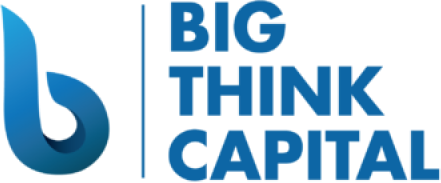How the Recent Fed Rate Hike Impacts Your Small Business Funding Strategies
Estimated reading time: 4 minutes
- The Fed’s rate hike can increase borrowing costs across various funding options.
- SBA loans may become less accessible due to higher interest rates and stricter lending standards.
- Working capital advances could see higher fees and stricter repayment terms.
- Merchant cash advances face increased costs, affecting their availability.
- Adapting funding strategies is crucial for maintaining financial stability.
Table of Contents
- Understanding the Fed Rate Hike
- Impact on SBA Loans
- Influence on Working Capital Advances
- Merchant Cash Advances and Their Adaptation
- Strategic Responses for Small Businesses
- Conclusion
- FAQ
Understanding the Fed Rate Hike
The Federal Reserve raises interest rates to manage economic growth and stabilize the economy during inflationary periods. By increasing the cost of borrowing, the Fed aims to curb excessive spending and bring inflation under control. However, this rate hike also means increased costs for borrowers, particularly small business owners who often rely on debt financing to support operations, growth initiatives, and unexpected expenses.
According to the latest reports from the Federal Reserve, rates have increased by about 0.75% following the Fed’s recent meeting, marking it one of the most substantial hikes in recent years (source: Federal Reserve Economic Data). This increase could significantly affect borrowing costs and strategies for securing funding.
Impact on SBA Loans
SBA loans are a popular choice for small businesses looking for long-term financing with relatively low interest rates. The increase in the Fed rate can impact these loans in various ways:
- Increased Interest Rates: SBA loans are typically tied to the prime rate, which is influenced by the Fed’s rate changes. With the recent hike, borrowers may find that the costs associated with these loans will rise, making repayments more expensive over time.
- Loan Accessibility: Higher interest rates can lead to tighter lending standards. Lenders may become more cautious, potentially affecting the approval rates for new borrowers. This means that entrepreneurs with lower credit scores or inadequate financial histories could face more challenges securing funding.
- Refinancing Opportunities: For businesses with existing SBA loans, it’s vital to evaluate the possibility of refinancing. While current interest rates might be low, the immediate cost savings will need to be weighed against the potential for future hikes.
SBA Loan Practical Takeaway: If you’re considering an SBA loan, explore your options as soon as possible. If you have an existing loan, evaluate the benefits of refinancing before interest rates continue to rise.
Influence on Working Capital Advances
Working capital advances provide quick access to funds, allowing businesses to cover everyday operational costs. As the Fed raises rates, the following trends emerge for working capital advances:
- Higher Fees and Costs: Alternative lending products like working capital advances often come with variable fees based on the loan’s risk assessment. As rates rise, lenders may impose higher fees to offset the increased cost of capital, making these advances more expensive.
- Stricter Repayment Terms: Lenders may adjust their repayment structures in light of rising rates. This could lead to shorter repayment terms or higher daily deductions, further affecting cash flow for small businesses.
- Focus on Cash Flow: With increased borrowing costs, ensuring a healthy cash flow becomes more critical than ever. Business owners should evaluate their revenue models and adjust accordingly to account for more expensive loan repayment options.
Working Capital Advance Practical Takeaway: Review your business’s cash flow regularly and adjust your operational strategies to better align with rising borrowing costs. Ensure you maintain a buffer to cover increases in repayments.
Merchant Cash Advances and Their Adaptation
Merchant cash advances offer a way for businesses to obtain immediate funds based on future credit card sales. The Fed’s rate changes can also impact this type of financing:
- Variable Rates and Fees: MCAs typically feature variable rates that can soar with Fed rate hikes. Business owners should anticipate skyrocketing costs, making it essential to compute the total costs of any advance against potential revenue fluctuations.
- Funding Availability: Lenders may tighten the availability of MCAs, particularly for those considered high-risk. With increased costs of capital from the lender’s perspective, less credit will flow into the MCA space, limiting options for small businesses.
- Sales Projections Matter: Business owners should have clear and realistic projections of sales revenue when seeking MCAs. The volatility in customer spending due to economic uncertainty can affect repayment schedules linked to sales volume.
Merchant Cash Advance Practical Takeaway: Before applying for an MCA, conduct a thorough analysis of your sales forecasts. Only seek this option if you can ensure steady revenue to support prompt repayment regardless of rising rates.
Strategic Responses for Small Businesses
Understanding the implications of the Fed rate hike allows business owners to adapt their funding strategies accordingly. Here are practical steps every small business should consider:
- Evaluate Current Financial Needs: Analyze immediate funding requirements against available products. Determine which financing options align best with your business goals while considering current and projected costs.
- Prepare for Increased Costs: Build financial models that account for potential future rate hikes. This preparation can help safeguard against unforeseen expenses and ensure your business remains liquid even as borrowing costs increase.
- Consult with Financial Experts: Partnering with experienced financial advisors or funding specialists, such as those at Big Think Capital, can provide invaluable insights tailored to your business’s unique circumstances.
Conclusion
As the Federal Reserve continues to implement rate hikes, small business owners must adapt their funding strategies to mitigate costs and ensure financial stability. Understanding the effects on SBA loans, working capital advances, and merchant cash advances is crucial for making informed decisions in this evolving lending landscape.
At Big Think Capital, we specialize in helping small businesses navigate these challenges with tailored funding solutions that meet their unique needs. Whether you’re exploring SBA loans, working capital advances, or MCAs, our team of experts is ready to assist you.
To learn more about how we can help your business secure the funding it needs, visit us at bigthinkcapital.com or speak with one of our funding experts today. Take charge of your financial future and ensure your business thrives in the face of rising interest rates.
FAQ
1. How do interest rate hikes affect small business loans?
The increase in interest rates can lead to higher borrowing costs and tighter lending standards, making it more challenging for small businesses to secure loans.
2. Should I refinance my SBA loan after a Fed rate hike?
Business owners should evaluate the possibility of refinancing, considering current rates against the potential for future hikes to determine if it’s beneficial.
3. What are the risks of working capital advances?
With rising rates, working capital advances may come with higher fees and stricter repayment terms, which can impact cash flow for businesses.
4. How can I prepare my business for rising interest rates?
Building financial models that account for potential rate increases can help businesses anticipate costs and maintain liquidity.






